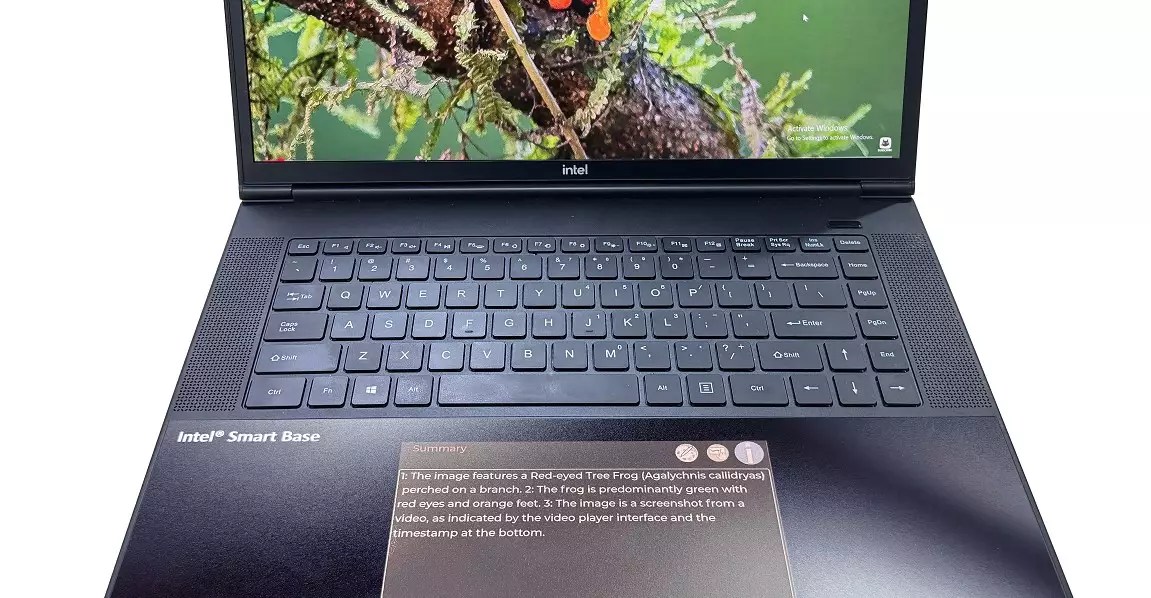The concept of integrating E Ink’s innovative display technology into laptop touchpads signals a bold shift in how we interact with our devices. Traditionally, touchpads have served a singular purpose: controlling the cursor and executing basic gestures. However, the advent of an E Ink-powered touchpad introduces a new paradigm—one where the touchpad not only controls but also acts as a dedicated platform for AI-driven insights, notifications, and contextual information. By transforming this often-overlooked area into a versatile digital workspace, manufacturers could significantly enhance productivity and user experience. Instead of merely being a surface for input, the touchpad could become an active, customizable interface that adapts to user needs, seamlessly blending hardware innovation with intelligent software.
This move challenges the conventional design boundaries, urging us to rethink the importance of peripheral zones on a laptop. The potential for displaying real-time data such as AI summaries, quick shortcuts, or contextual tools right beneath your fingers offers an intuitive, non-intrusive way to boost efficiency. Yet, while this concept is exciting, it demands careful consideration of how well such a technology can harmonize with existing workflows without becoming a distracting or resource-draining feature.
Technological Limitations and Practical Constraints
Despite the enticing prospects, there are significant hurdles that E Ink needs to overcome before these futuristic touchpads become mainstream. The core strength of E Ink’s displays lies in their ultra-low power consumption and high readability, which are ideal for passive content. However, their limitations—particularly in color reproduction and refresh rates—pose questions about their suitability for dynamic, AI-rich environments. Unlike LCD or OLED screens, E Ink displays refresh slowly and are mainly optimized for static images or text. This makes them less effective for applications requiring rapid updates or full-color visuals.
Moreover, the user experience may suffer if the color E Ink screens under the fingers become a source of distraction or visual clutter. When an area of a device primarily designed for minimalism is suddenly transformed into a visual playground, it could counterintuitively hamper focus. The question then becomes: how much information should such a touchpad display provide before it overwhelms or distracts the user? Striking the right balance between utility and simplicity will be critical in the successful adoption of this technology.
Beyond visual constraints, technical integration presents its own set of challenges. Compatibility with existing hardware, especially in laptops that rely heavily on power efficiency, raises concerns about battery life and thermal management. Although E Ink’s low power draw is a significant advantage, the demands of AI applications—particularly real-time updates—could increase power usage, diminishing the benefits. The lack of detailed technical specifications from E Ink, such as resolution, refresh rate, or integration methods, leaves many questions unanswered about how seamlessly this technology can be embedded within current or future laptop architectures.
Market Potential and Future Outlook: A Double-Edged Sword
The potential applications of this technology are tantalizing. Imagine a laptop where your touchpad displays contextual AI summaries, quick access to commonly used apps, or even minor notifications—all without cluttering your main workspace. Such a feature would not only enhance multitasking but could also reduce reliance on traditional screens, easing eye strain and conserving battery life.
However, translating this concept into widespread adoption is fraught with uncertainties. Primarily, manufacturers will need to weigh the benefits against the costs and practicalities of integrating E Ink technology. Will users truly benefit from a color display in this form factor, or will it merely become a gimmick? The answer likely depends on software integration and user needs, which remain underexplored at this stage.
Furthermore, competition from other innovative display solutions—such as flexible OLED secondary screens—can potentially overshadow E Ink’s offering. The industry has shown a penchant for high-resolution, vibrant displays that can handle multimedia and complex visuals well. In comparison, E Ink’s subdued visual capabilities could limit its appeal to niche markets or specific use cases. Yet, the low power consumption and simplicity offer a compelling advantage, especially for users seeking longer battery life and less distracting interfaces.
E Ink’s push into laptop touchpad technology opens a fascinating chapter in hardware innovation. While it promises efficiency and smarter interfaces, the road to reality is layered with technical, practical, and market-driven obstacles. Whether this leap will redefine our interaction with laptops or remain a niche curiosity hinges on how effectively these challenges are addressed and whether users truly embrace the new paradigm.


Leave a Reply